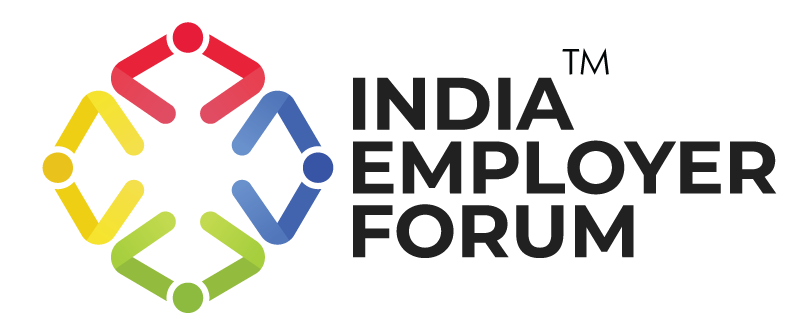Language is the road map of a culture. It tells you where its people come from and where they are going.” – This highlights the connection between language and society. The office of 2025 isn’t just about hybrid work and AI integration; it’s about a whole new language. Forget water cooler gossip, the buzz is now all about “Presenteeism Sprints” and “Corporate Catfishing.” The evolving workforce has coined a unique lexicon, reflecting the anxieties, aspirations, and absurdities of modern corporate life. Let’s decode some key new workplace trends shaping the future of the work landscape:
Presenteeism Sprint: The Illusion of Productivity
Remember “presenteeism,” the art of showing up while mentally checked out? It has evolved into the “Presenteeism Sprint” which describes the frantic dash to appear engaged for a few crucial hours, enough to tick the “face time” box, before disappearing. This shift is driven by a complex interplay of factors where performance anxiety plays a significant role. Employees increasingly feel pressured to constantly prove their worth and commitment and the fear of being perceived as unproductive or lacking dedication fuels the need to engage in these performative sprints. This behavior also highlights a worrying trend: a growing disconnect between actual productivity and the perception of effort. Instead of focusing on tangible results and meaningful contributions, the emphasis seems to be shifting towards outward displays of busyness.
This raises a crucial question: Are organizations truly rewarding genuine performance and valuable output, or are they inadvertently incentivizing the ability to put on a convincing, albeit temporary, show? This focus on performative presence rather than actual productivity can ultimately be detrimental to the individual as well as the organization leading to burnout, decreased morale, and a decline in overall efficiency and innovation.
Corporate Catfishing: The Mask Slips
In the age of LinkedIn and digital branding, “Corporate Catfishing” is the new white-collar crime involving professional self-promotion.. It’s no longer t just individuals padding their CVs, its a systemic issue where entire companies engage in misleading practices to enhance their public image. This may involve exaggerating their market share, downplaying controversies, or even fabricating glowing testimonials. They may also present a carefully curated image of their company culture, downplaying internal issues or labor disputes.This trend erodes trust and raises serious ethical questions. As transparency becomes increasingly valued, the long-term consequences of corporate deception could be severe.
In an environment where information spreads rapidly, the fallout from corporate catfishing can be swift and far-reaching, ultimately impacting the bottom line and jeopardizing long-term sustainability. The potential for public shaming and boycotts, amplified by social media, adds another layer of risk to this deceptive practice. Organizations that prioritize authenticity and ethical conduct are more likely to build lasting trust and thrive in the long run.
Anti-Perks: The Cost of “Culture”
The once-celebrated perks of trendy workplaces such as unlimited snacks and ping-pong tables, are facing a backlash. A new philosophy, often termed “Anti-Perks,” is emerging in some organizations which involves stripping away traditional benefits and replacing them with measures like mandatory parking fees, shorter break times, and a heightened focus on surveillance and control, often masked as “performance optimization.” This shift represents a fundamental change in how companies prioritize their resources, with cost reduction frequently taking precedence over well-being and comfort of their employees. Proponents of this “leaner” approach often argue that removing distractions and tightening the reins fosters a more “results-oriented” environment leading to greater efficiency and profitability.
However, this perspective overlooks the potential negative consequences such as breeding resentment among employees, leading to a decline in morale and a sense of being undervalued. Such rampant cost-cutting can ultimately backfire leading to additional costs arising from increased employee turnover and talent drain. Furthermore, the long-term impact on creativity and innovation within a company that embraces Anti-Perks remains a significant concern. Such a culture is unlikely to foster collaborative and innovative thinking that drives progress.
Reverse Mentoring: The Wisdom of the Young
This positive trend sees a flip in the traditional mentor-mentee relationship. “Reverse Mentoring” acknowledges the rapidly changing digital landscape and the need for leadership to stay relevant. Gen Z and Millennials are seen guiding senior executives on everything from TikTok trends to blockchain technology. This trend is a recognition that wisdom isn’t solely tied to age and experience, and that younger generations have valuable insights to offer. The younger generation being digital natives possess valuable insights and expertise that can significantly benefit seasoned leaders. These younger individuals offer a unique understanding of emerging consumer behaviors, innovative communication strategies, and the ever-shifting dynamics of the modern workplace. By embracing reverse mentoring, organizations can bridge the generational gap to foster a culture of continuous learning, and ensure that their leadership remains agile and equipped to navigate the challenges and opportunities of the 21st century.
Burn-out Blocking: The Fight for Sanity
The relentless pressure of modern work, characterized by long hours, constant connectivity, and ever-increasing demands, has unfortunately led to a significant rise in employee burnout. This widespread phenomenon, where individuals experience emotional, physical, and mental exhaustion due to prolonged or excessive stress, has prompted a growing counter-movement known as “Burn-out Blocking. Burnout can manifest in a variety of ways, from decreased job performance and increased absenteeism to more serious health issues like anxiety, depression, and cardiovascular problems.
Companies are beginning to understand that investing in employee well-being isn’t just a matter of corporate social responsibility; it’s also a strategic imperative. A healthy and engaged workforce is a more productive and innovative workforce. Many organizations are implementing initiatives like mandatory vacation time, mental health days, and mindfulness workshops. While some companies are truly dedicated to fostering a sustainable work culture that prioritizes employee well-being, others may be implementing these initiatives primarily as a PR move to improve their image and attract talent. The true test lies in the consistency and depth of these efforts, as well as the genuine support and encouragement to ensure that employees feel empowered to utilize these resources without fear of negative repercussions. Ultimately, the success of burnout blocking will depend on a fundamental shift in workplace culture, one that values employee well-being not just as a perk, but as an essential component of a thriving organization.
The corporate lexicon of 2025 provides a glimpse into the complex world of work. It’s a language that reflects the complex and often contradictory forces shaping the modern workplace. We see the rise of terms like “performative busyness,” highlighting the pressure to appear constantly productive, even if actual output is minimal. But it’s also a world where younger voices are being heard and where the fight against burnout is finally gaining traction.
As the workplace continues to evolve, so too will its language, reflecting the ever-shifting dynamics of the modern workforce. Technological advancements, changing demographics, shifting societal values and the ongoing push and pull between competing priorities are reflected in these new terms. This language captures the nuances of work in the 21st century, a language that is constantly evolving to reflect the changing nature of how we work and our inherent values.






